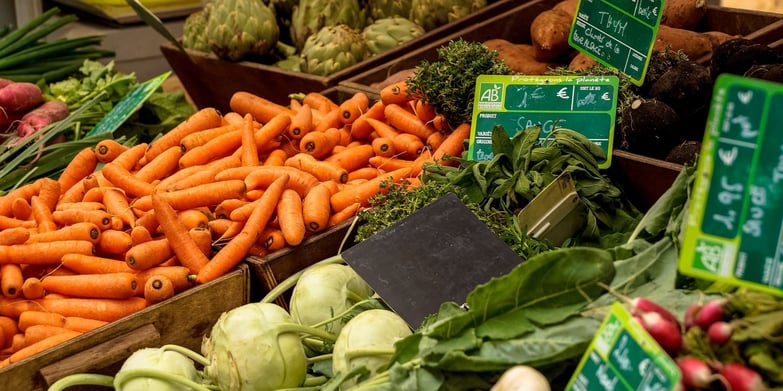
Proper handling of fruits and vegetables after they are harvested is the key to a successful produce processing operation. As a highly perishable commodity, a variety of factors can significantly reduce the yield of crops after harvest including heat, mechanical damage, and microbial spoilage.
In some cases, as much as 30 percent of produce can be lost post-harvest due to contamination by disease. Losses are especially high in the fresh-cut fruit and vegetable industry, where the protective barrier between the inside of the fruit and the environment is broken. As a result, methods that reduce the incidence of post-harvest spoilage represent a significant increase in both yield and profits.
One of the most effective ways to reduce the contamination of fruits and vegetables is to wash them. Washing removes soil and small particles that harbor fungi, bacteria, and other contaminants. Most wash water is recirculated in post-harvest handling in order to conserve water and energy. The recycled water is known as process water. Organic matter and microorganisms will accumulate over time as process water is used. As a result, sanitation chemicals are widely used to enhance the effectiveness of wash water and to prevent cross-contamination from recirculated wash water.
Chlorine is the most commonly added sanitation chemical used in fruit and vegetable washing.
Chlorine is approved for use in fruit and vegetable washes by the U.S. Environmental Protection Agency (EPA) in three forms: chlorine gas (Cl₂), calcium hypochlorite (CaCl₂O₂), and sodium hypochlorite (NaOCl).
All of these forms of chlorine will dissociate to form hypochlorous acid (HOCl) and hypochlorite ions (OCl¯). Both of these forms exist in equilibrium based on the pH of the solution; but hypochlorous acid is more desirable in process water for its improved ability to sanitize. A pH between 6.5 and 7.5 for process water is ideal to maximize the presence of hypochlorous acid. If the pH is too low, chlorine gas will start to be released from the wash water, creating a workplace hazard and damaging equipment. If the pH is too high, the formation of the hypochlorite ion will be favored over the formation of hypochlorous acid, resulting in less effective sanitation.

Sanitation efficiency of chlorinated wash water can be monitored with oxidation-reduction potential (ORP). ORP measures the capacity of solutions to oxidize or reduce compounds. The ORP value of wash water has a direct correlation to required contact time to destroy or inactivate harmful bacteria. For example, an ORP value of 665 mV or above will destroy E. coli and Salmonella bacteria after less than 20 seconds of contact time. An ORP of 550 mV requires 60 seconds of contact time for the same level of disinfection. Since ORP can be measured rapidly both in-line and off-line, ORP is a convenient parameter for determining effectiveness, of a wash bath.
A produce processor contacted Hanna Instruments for a method to monitor the ORP of their recirculating vegetable wash bath. There was already a pH and ORP controller in place at the facility so the customer was looking for a portable meter to perform spot checks to verify equipment performance. Hanna offered the Professional Waterproof Portable pH/ORP Meter - HI98190 and the Glass Body ORP Electrode with Quick Connect DIN Connector - HI36183 combination ORP electrode with built-in temperature sensor.
The HI98190 is a rugged meter with an IP67 waterproof rating, making it ideal for use on the production floor. The Hanna sales representative also supplied the customer with the HI7022M 470 mV @ 25°C ORP Test Solution (230 mL). The test solution permits a quick check of the electrode; values should be within ±50 mV of the stated value on the bottle at 25°C. Use of the ORP test solution provided a simple way to determine if the ORP electrode needed to be conditioned. The meter also includes the HI12963 titanium body pH electrode. The customer valued the additional pH electrode because the meter can also be used as a portable unit to perform process calibrations on the pH controller. The customer was impressed with the service and support offered by Hanna and will be sure to contact Hanna for future process equipment.
That's why we've dedicated our blog as a helpful resource for you to use! Catch up on the latest products, explore industry trends, discover testing tips, learn how to improve results, and more. Got questions? Email sales@hannainst.com.
